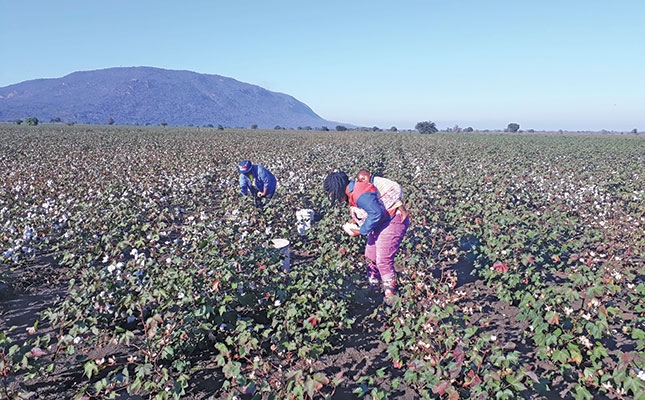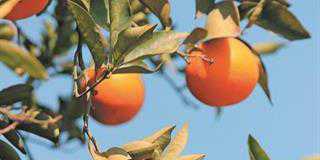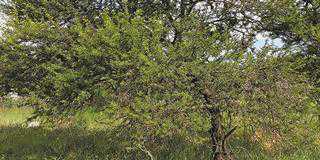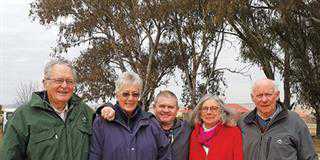
Photo: Lindi Botha
Progress in agriculture depends largely on implementing technology that can improve yield, reduce inputs and increase efficiency.
But while commercial farmers in South Africa are increasing their use of such technology, boosting their businesses further, those without the means to employ these solutions are falling behind.
Delegates and speakers at the Africa Agri Tech conference held earlier this year in Pretoria expressed their concern over the widening gap in production and profitability between those who could afford to implement modern solutions, and those who could not.
Lack of money
Speaking at the conference, Farmer’s Weekly editor Denene Erasmus said that developers of technology needed to change their mindset about how much disposable income African farmers had.
“Cost is a major impeding factor for technology adoption and mechanisation in Africa,” said Erasmus.
“The applicability of technology is also a problem because it can’t just be imported, with developers expecting to cut and paste solutions. It needs to be custom-made for the particular challenges faced by farmers in this region. Distances to ports and roads, for example, make it very difficult to implement technology. Some farmers are so far from any kind of road infrastructure that they would have to carry fertiliser for several kilometres from where it was delivered to their farms if they wanted to use it.”
Stehan Cloete, director at Agtech Africa, also notes the disconnect between technology developers and agriculture, and says that there is a lack of understanding in the technology development world when it comes to the real problems that farmers face.
“We tend to adopt technology that works in other industries, believing it should work in farming too, or any other industry for that matter,” says Cloete.
“That’s one of the main reasons we don’t see the traction we would like to see in technology uptake. We need to identify the problems with the farmer and then be creative about solving those problems.”
Dr Sifiso Ntombela, chief economist at the National Agricultural Marketing
Council, adds that if technologies are not planned for and implementable in the local situation, it won’t be implemented at all. It is important for South Africa to be on the developing, as well as the consuming, side of technology, “so that we can get solutions that are suited to our circumstances”.
Slow adoption
In terms of technology adoption, Cloete says that on a scale of one to 10, South African farmers are at a three.
“Very few, if any, farmers have the most recent solution ‘kit’ at any given moment, as it’s an ever-evolving and improving world. Furthermore, in South Africa, the majority of farmers are on a subsistence or small-scale level.”
Technology developers need to realise that they cannot develop tools without understanding the needs of their clients, adds Cloete.
He says government that support is an effective solution to make precision agriculture and technologies affordable.
“In the EU, for example, about 40% of its budget is ring-fenced to support farmers to access more technologies and become environmentally sustainable. In South Africa, less than 1,5% of the state budget is spent on agriculture.”
According to Ntombela, one of the most critical areas where investment is needed is in biological material.
This includes access to seeds and a change in production systems that would increase productivity and efficiency.
“We also require farm equipment suited to a small-scale farmer, such as tractors and planters of the right size, drones to better manage fields and orchards, and soil testing and seed preservation equipment.”
Financial technology
Cloete notes that when the focus switches to new entrants to commercial agriculture, financial technology (Fintech) solutions will come to the fore, as this segment is not yet mature.
“The Fintech solution in itself cannot change the narrative, but with initiatives such as comprehensive mentorship programmes and complete value chain digitisation, it’s now possible to attract supplier development funds from corporations, as it enables full transparency over the value chain for every stakeholder.
“The best example is the solution developed by IQ Logistica for their client, the South African Sustainable Cotton Cluster.
“This turned the entire South African cotton industry around and it has seen unbelievable growth over the past five years.
“This approach could be the enabler to access finance, as our legacy banks cannot invest unsecured and don’t really have the appetite for primary agriculture.”
When it comes to mechanisation, notes Cloete, both Fintech and Agtech solutions are necessary. The latter includes satellite imagery, growth degree day measurement, and weather, to enable a yield engine.
“This forecasts yield at any given time within the growing season,” explains Cloete. “That information, layered with the contracted pricing, enables farmers to make decisions on nutrient applications, for example.
“Such a data platform, where all the farm’s data is collected and third-party experts gain access to segments they are allowed to view, can assist the farmer to make informed decisions.”
On a farm of any size, this would help sustain profitability.
“This is only really possible if you view all agronomic data and measure data with financial data. From this point of understanding the farm on a precision level, you can now further optimise.”
Start with the basics
To increase yields and efficiency on a small-scale level, Ntombela advises that farmers start with understanding their soil health and water quality, as well as the quality of seedlings to be planted.
“Once these basics are in place, technologies such as drones and precision farming equipment become critical in terms of applying optimal fertilisers, field management, irrigation and other farm activities,” he says.
Ntombela cautions that collective buying might not be an ideal solution for small-scale farmers due to the significantly different needs of each farmer.
“This has been illustrated on many occasions on land reform farms where group dynamics have destroyed good projects.
“However, the world is moving towards virtual ownership of equipment, as we’ve witnessed with Uber and Taxify, where you don’t necessarily have to own the asset, but can easily access its service through cell phones.
“In Kenya, farmers use their cell phones to hire tractors and planting equipment on the Ubertractor app. I think this is the future for small-scale farmers in South Africa.”
Cloete concludes that, ultimately, technology should be an enabler and not a solution in itself.
“It mostly assists a farmer to become a precision farmer and to remain so consistently. The solution is therefore not in a single product, but in a comprehensive approach. There are too many elements in commercial farming that a new farmer needs to learn about to single out anything.
“This said, a farmer has around 40 summers to be successful, if he or she starts farming at a young age. Because not all farmers are 25 years old, we need to bridge the gaps that farmers face, so they can reduce mistakes and optimise profits.”
Email Dr Sifiso Ntombela at [email protected], or Stehan Cloete at [email protected].











